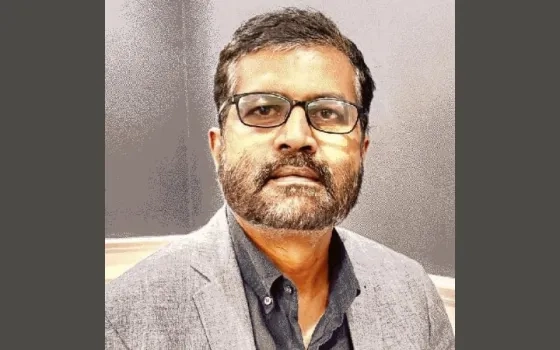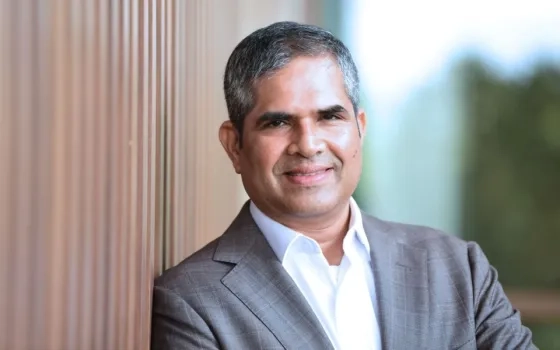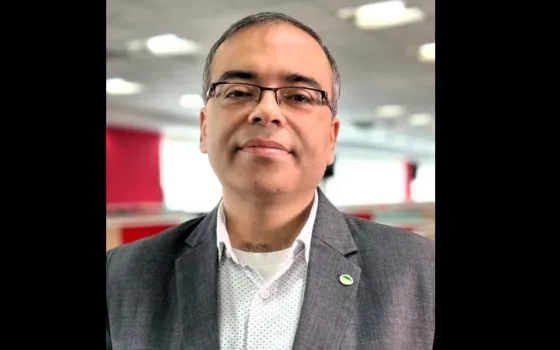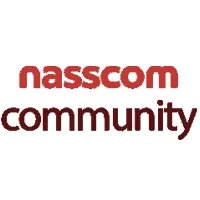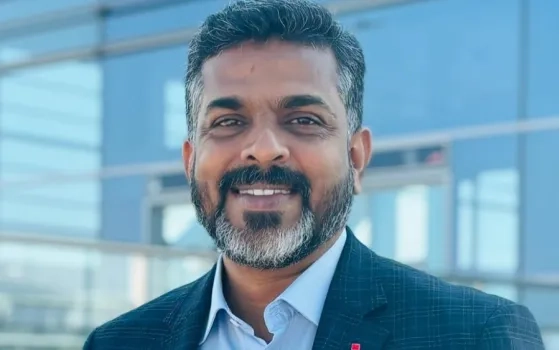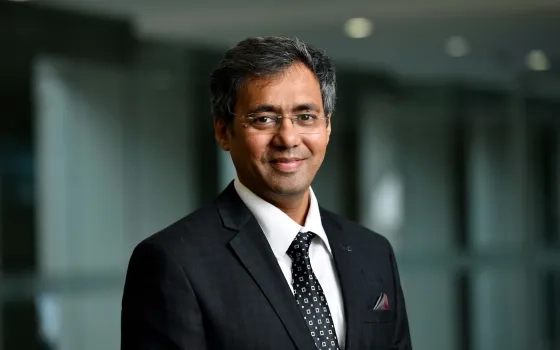
Jim Sadler, COO, SSP Worldwide
1. To have a “Saville Row” approach to insurance, what kind of tech interventions are needed to capture data?
I have been in the Insurance industry for more than 30 years but not all of it in the IT domain, if I may add. In the first 10 years of my career I was involved in various aspects of insurance operations, initially training as a claims assessor, then an underwriter before progressing to a branch general manager. It was only when IT started emerging as a viable business tool, say 25 years ago, that I really got interested in tech.
25 years on, even with all the tech we now use, the business model of insurance hasn’t changed much. It’s also a desperately misunderstood industry. Let me explain. I think of insurance as a deeply “charitable” business, you know. Insurance companies determine (through their products and rating models) how much money an individual should contribute towards a “common pool”, which will be used to mitigate the financial burden – in the eventuality of a misfortune befalling an individual / entity when an asset they own is lost or damaged. It’s about a bunch of people coming together (without actually knowing it) and contributing to the common kitty, held by the insurance firm, which is then used to bailout the unfortunate.
For more than a century this model has worked well in what I call an “analog” mode. Fundamentally, though, it has been about data – information gathering on insurable assets and in conjunction with the ecosystem, to assess risk. These inputs led to specific policies. When IT came along, all it did was automate the process of data gathering, data processing and workflow. But now, in the digital economy, the business model in itself, is changing dramatically and that means a fundamentally different role for IT and a different proposition to customers.
Look at house insurance for example. Earlier (in analog mode), the insurance companies would gather broad-based information to assess risk which would then be aggregated for profiling. Over an expanse of few square miles (say) it would be a one-size-fit-all-approach to premium on policies which insurance buyers availed of. Insofar, computers helped to do all these computations much faster. Today, in contrast, every square metre is geo-mapped. The granularity of the data available on every house, is being used to deliver personalized insurance products. SSP Worldwide develops software which can model this data and make it work towards more sophisticated and customized policies, meaning that everyone gets a unique price and previously uninsurable properties are now insurabale (imagine if you are the only house on a hill which is in the middle of a flood-plain of a single postcode).
Historical information that already existed will be married to real-time data, continuously being captured. It has resulted in far more comprehensive data sets sourced from diverse data points (even unknown sources, not mapped earlier). Thereon, the software can be used to derive deep insights. This is a major shift. Not only have we gone deep but infinitely quicker as well, raising the possibilities many times over. Risk mitigation strategy is simply moving up by leaps and bounds. And, SSP Worldwide is at the heart of this industry-wide digital disruption.
Take claims processing which has traditionally been a reactive approach. Only after the occurrence of an event, did the claimants raise an issue and get paid compensation for their loss. Today, it can be vastly different. Complex algorithms can detect anomalies in data (captured through sensors) in real-time and send out alerts to avert disaster. It has become a far more proactive and predictive diagnosis. This kind of “loss remedying” strategy is on a high-growth curve and will soon contribute prominently to revenue streams. It’s early days yet.
In “analog mode” insurance was about paying for a loss in a “digital mode”, insurance could be more about preventing a loss.
2. Please share your Thoughts on the Indian experience.
Our development centre in Gurgaon caters to the UK, the US, Caribbean, Africa, Asia-Pacific and South East Asia.
There’s an interesting pattern in developing economies. Once technology is affordable & available, it leapfrogs many generations to find greater adoption. In insurance, the level of penetration (because of tech) is on the rise. Data availability coupled with outreach has positively impacted the affordability factor as well. Today, across the globe, a greater percentage of the population has access to insurance. And, it’s happening at a much faster pace – unprecedented. Moreover, a platformized approach is increasingly finding resonance where insights and best practices are being shared.
The barrier to set up a meaningful business has come down substantially due to technology. Ideas and IPs rule the roost – even more than capital. Though in all fairness to the younger lot, ideas can prove to be a barrier when there are too many of them. The sense of uniqueness is quickly lost and me-too approaches take over. It may be easier to get noticed initially but from there on to make it commercially viable, it may have become harder.
3. Your thoughts on innovation please.
It was Thomas Edison who famously said, in response to criticism that his latest attempt to invent the incandescent lamp had failed, “I have not failed. I’ve successfully found 1,000 ways that won’t work, which means I am closer to the way that will work”. In the past, innovation was the pursuit of the scientific community and inventors, but today we’ve also added the vast entrepreneurial class. It has led to increased competition like never before. We are developing sophisticated insurance products here (Gurgaon) which add value to the entire chain – insurance agents, underwriters, price comparison websites and the insurance companies alike.
SaaS is a global trend today and I am proud to say that SSP Worldwide has been a pioneer in Cloud-first delivery in the insurance domain. We have partnered with AWS and our products are deployable globally. We are totally focused on creating IPs and propagate the idea of software products consumption, as a service. In the last two years, we’ve focused on developing our next-generation software which are Cloud-only products and used many platform services available to create differentiation. Open APIs with published standards contribute to the platform approach. In turn, we are able to positively impact pricing, risk modelling, distribution & policy administration. We have also made it possible for startups to integrate with our platform with our open architecture and data models. A collaborative approach only helps to improve upon the innovation quotient.
Earlier, it wasn’t easy to re-trace the entire process of selling insurance. Once sold, the information was relegated to the backburner. Today, with AWS storage and costs on a steady decline, the data can not only be stored but also used subsequently for fine-tuning products. We can now store every single moment / instance of the transaction trail which helps us to derive deeper insights in buying patterns. This is particularly beneficial in understanding price sensitivity and competitiveness for clients that use our software. We call this service “SSP Intuition”.
Actuarial science took many years to scale and bring in a high degree of sophistication. Today, Machine Learning is able to spot patterns which humans are likely to miss or simply unable to comprehend, thereby augmenting productivity in a very big way. Again, it boils down to the quantity and quality of data which we have access to.
4. Your comments please on the kind of talent that we see in the insurance sector.
Software engineering continues to be powerful. Increasingly, we will need fewer coders and more of other skilled professionals in the areas of devops, site reliability engineering, configuration and the integration of platform services to products. Today, customization is less of code change and is veering towards configuration change. In 3-5 years, devops skills will be as important as coding. The challenge of coding is rapidly being solved by open APIs and AI. This is something which engineering colleges & computer science courses need to take into account while preparing their curriculum to ensure the students are future-ready.
Earlier, when graduates joined the company they were required to learn coding and companies spent considerable time towards this aspect of skill building. Today, that’s not the case any longer. Fresh graduates who are inducted, already know a decent amount of coding in most modern languages and open source tools.
5. What are the top 2 – 3 challenges on the minds of CIOs from the insurance sector and how are they being addressed?
I’d like to answer that question in 2 parts. First, from the standpoint of a CIO in an Insurance company and then again, as a COO in a tech organisation.
As a CIO:
• Regulation is not able to keep pace with technology.
• Cybersecurity. With so much data one is never quite sure who is accessing your data (or when, where and how)
• Fundamental shift in CIO’s role. Earlier, it was an internal IT role which was chiefly concerned about managing data centres. From a back-end role, it is now a front-ending one, and playing a critical role in the enterprise digital disruption where IT is part of the offering and value chain. Every CIO role should now be a front-office role..
• Even the Board has very different expectations of them. CIOs oversee a significant amount of business risks and have to spot opportunities as well. To add, CIOs have now got a seat on the Board.
It brings us to the all-important question. It’s a dilemma that the business community is facing. With increasing complexity, should the CIO’s responsibility & accountability be distributed? Should all role in industry be tech-savvy?
As a COO:
• Solve the CIO’s problem – regulatory & cybersecurity standpoint – by developing products which make no compromises on these fronts. It can take a massive load off the CIO’s shoulders.
• Assimilating global talent (in multiple functions, roles & responsibilities) which are spread out in different time zones and be able to deliver global products which are relevant.
• Having to continually offer sophisticated products in an environment which is price elastic.
6. What’s the industry going to look like in future (3 – 5 years) – your thoughts please?
• The world will have a greater access to insurance products. It will be made possible because of data availability (in real-time) which can be leveraged to come up with more customized solutions to include the under-insured sections of society.
• With the “rental” economy increasingly becoming popular, the need to own assets may reduce. For instance, why would I care if my rented car burns down? In that case, the profile of insurance buyers will change. We can foresee a new set of insurers who will disrupt the existing model.
• If data is as valuable as, or more than oil, and if the incidence of a cyberattack can derail business, then would it galvanize companies to act proactively and insure for cyberattack? Surely, it could open up a whole new revenue stream.
7. Your leadership mantra, especially your core values.
I have been given 5 pieces of great career advice by people who nurtured me and I try to live by these every day.
1. Work hard. Why? Because there’s greater joy in earning something than to have it come for free. Hard work and success is self-affirming and leads to higher self-esteem.
2. Find enjoyment in what you do. An average work day can be mundane and from a long-term sustainability standpoint it’s very important that people draw pleasure from their career pursuits and find the things to enjoy about their work or who they work with.
3. The enthusiasm to learn every single day. Please, never assume that you’ve learnt everything.
4. Don’t be egoistic as you assume higher responsibility. It’s very important to not inflate or have an exaggerated sense of self-importance.
5. Don’t box yourself in. Be open and receptive to new opportunities, you never know where they will lead.
As for an overall leadership mantra, mine’s really simple – “Do the right thing, say what you mean, show how you feel”






